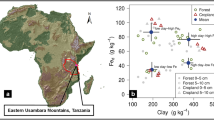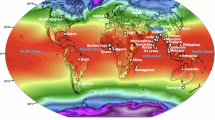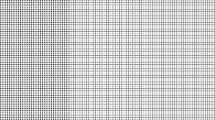Abstract
KAOLINITE has generally been recognized as the most widely occurring clay type in the humid tropics. Various theories in regard to the probable mode of occurrence of this clay type have been advanced from time to time. Prescott and Pendleton1 have observed that in a region of high rainfall and under heavy leaching: “Kaolinite is likely to be most characteristic”. They have also expressed the likelihood of kaolinite formation as a result of resilicification of gibbsite. According to Russell2 kaolinites are formed “under conditions of a low concen tration of bases”, that is, in well-drained areas. It has also been suggested by Russell2 that in Malabar laterite might have developed from a lithomarge (containing 30–50 per cent kaolinite with 15–40 per cent of iron oxides) under an indurated iron pan.
This is a preview of subscription content, access via your institution
Access options
Subscribe to this journal
Receive 51 print issues and online access
$199.00 per year
only $3.90 per issue
Buy this article
- Purchase on SpringerLink
- Instant access to full article PDF
Prices may be subject to local taxes which are calculated during checkout
Similar content being viewed by others
References
Prescott, J. A., and Pendleton, R. L., Laterite and Lateritic Soils, 33 (Commonwealth Bur. Soil Sci. Tech. Comm., No. 47).
Russell, E. J., Soil Conditions and Plant Growth. 556, 560 (Longmans, Green and Co., Ltd., London, 1961).
Author information
Authors and Affiliations
Rights and permissions
About this article
Cite this article
TEWARI, G. Occurrence of Kaolinite in Association with Iron-pan. Nature 198, 1019 (1963). https://doi.org/10.1038/1981019a0
Issue date:
DOI: https://doi.org/10.1038/1981019a0



